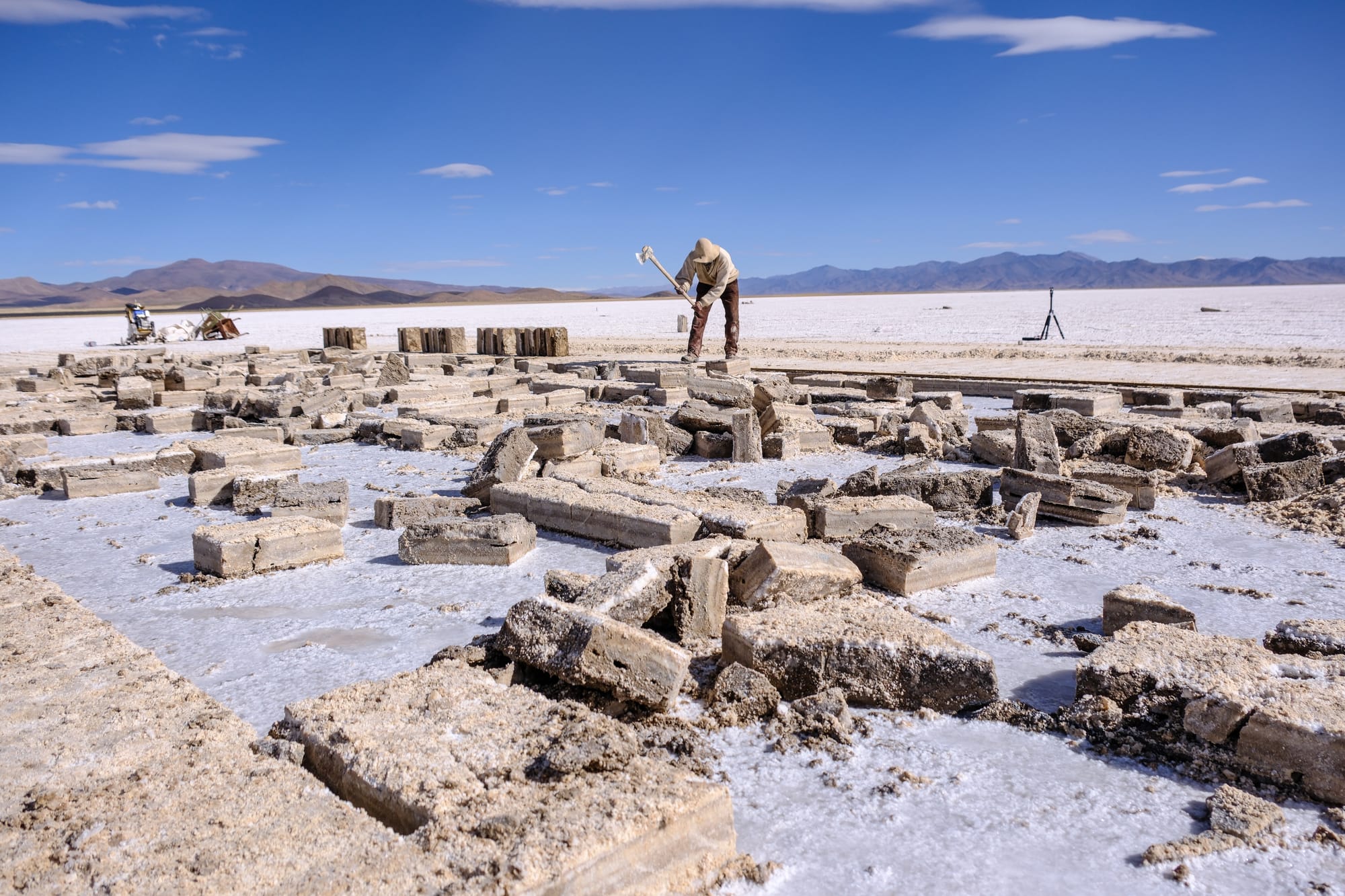
DISPATCH: The Desert and the Mine
The Lithium Triangle, spanning Argentina, Bolivia and Chile, contains over half the world’s lithium reserves, essential for the energy transition. But mining here is fraught with human, cultural, political and ecological questions.
The Chilean village of Peine, home to the Lickanantay people, climbs a steep hill in the foothills of the Andes, and from it the golden browns and whites of the salt flats stretch to the horizon. People have lived in this part of the Atacama Desert for thousands of years. Today, the land is changing.
Just 30 kilometres from Peine are the evaporating pools of the region’s lithium mine. Look down as you fly over the desert and you can see their scale: the equivalent of 3,000 football pitches marooned amongst the sand. Chile is the second largest lithium producer in the world and, along with Bolivia and Argentina, it forms part of the Lithium Triangle, home to more than half of the world’s lithium reserves. The mineral has been mined since the late 1800s, when it was used in ceramics and as a treatment for bipolar disorder, but in recent years its extraction has boomed as lithium has found new uses: the mineral is both lightweight and has a high power-to-weight ratio, making it ideal for portable rechargeable batteries of the kind found in everything from mobile phones and laptops to electric cars.
To meet climate mitigation targets will require electrification on a massive scale, which means both more batteries and escalating demand for lithium. It also means escalating demand for lithium. Last year alone, production increased by 24 per cent, and it is projected to grow a further 12 per cent per year for the next decade according to industry analysts Fastmarkets. The implications of this expansion are thrown into stark relief in the countries of the Lithium Triangle.
Lithium mining began in the Atacama Desert in 1984, and the presence of SQM, the Chilean mining group and one of the world’s largest lithium miners, has brought money into the area. The roads have been paved, and the offices of the Council of the Atacameños People, an organization that represents 18 Indigenous communities, boasts modern computers as well as a radio studio. Its budget in part comes from profit-sharing agreements with the mining companies. But these benefits have been accompanied by environmental degradation.
